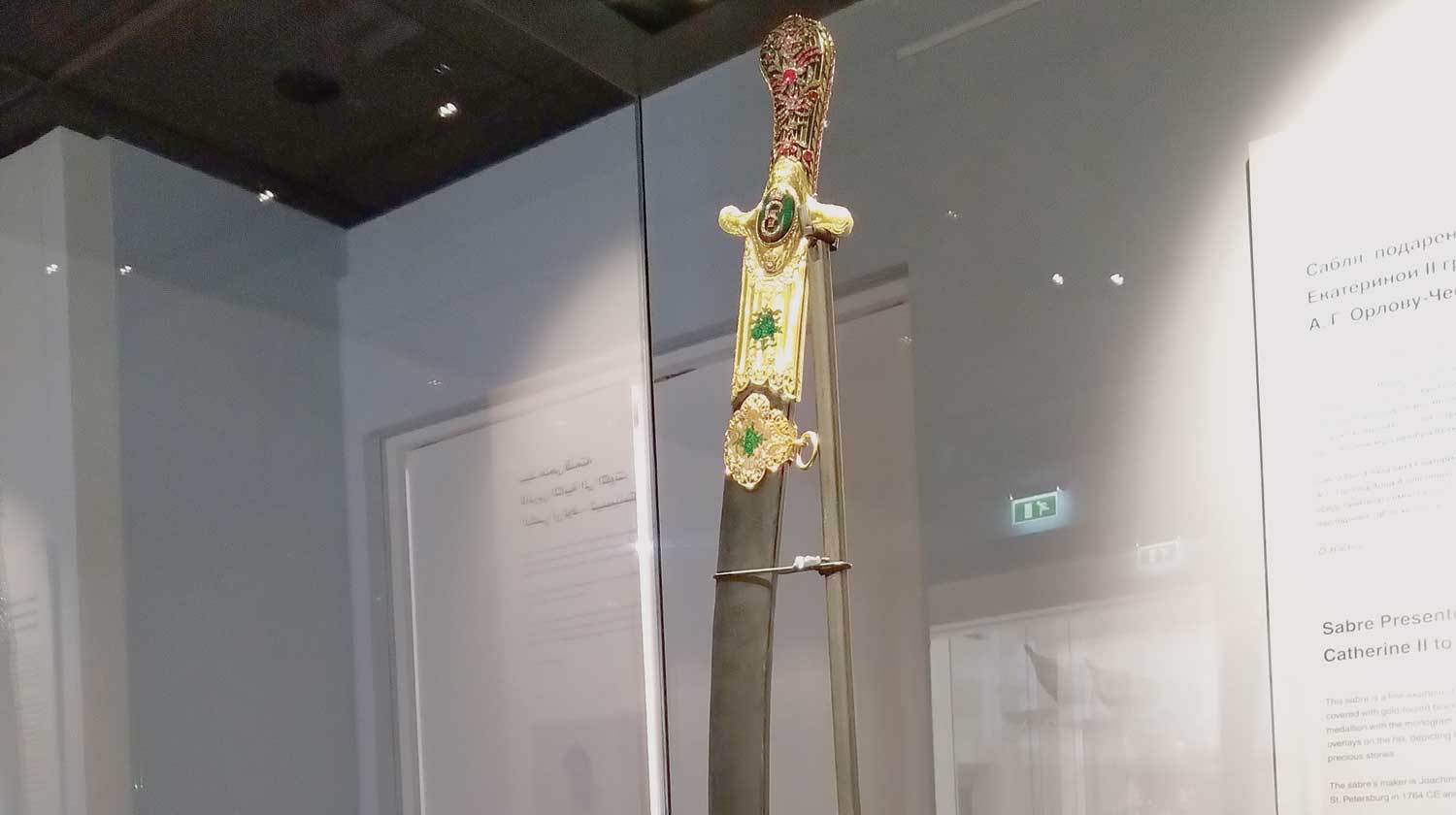

MUSCAT, APRIL 21 - One of the exhibits as part of the State Hermitage Museum Collection currently being held at the National Museum of Oman is the porcelain vase with the Arabic inscription ‘La Ilaha Ila-Llah’ (There is no God but Allah) repeated four times. The vase made in St Petersburg in the 19th century CE, is styled after the Hispano-Moresque ceramics of Muslim Spain. The central decoration of the vase comprises a double-headed eagle in an oval golden medallion. The medallion is surrounded by the Arabic inscription.

The exhibition will continue until May 10, 2019.
The vase conveys more history — Gilded shields on either sides bear a diagonal epigraphic motif that imitates Arabic naskh style script.
According to an expert from the museum, “Escutcheons in pink medallions imitate the coat of arms of Nasrids (1232-1492 CE), the last Muslim dynasty of Spain.”
The body of the vase is adorned with Arabesque and geometrical motifs. The structure of the ornamental pink band derives from Oriental tile work.
The expert described, “In form, the vase closely resembles 14th century CE two-handled faience vessels from the Malaga workshops of southern Spain — a famous example of which is the Fortuny vase in the State Hermitage Museum collection, which may have served as its model. The vase is also decorated with reworked stalactite, sprout and arabesque motifs. Stylised stems with leaves on the handles evoke a recurrent theme in Muslim artwork of the 12th-14th centuries CE.”

The culture and art were celebrated in the past and this collection is a proof of that. Another renowned work on display is the Sabre, the ceremonial award weapon that was presented by Catherine the second to Count Alexey Orlov-Chemensky.
The steel blade is ceremonious with gold-tooled black leather in addition to being decorated with rubies, diamonds. The monogram of Empress Catherine the Great is also made from diamonds and rubies.
The Sabre’s maker was Joachin Hasseigren, a native of Sweden who had also joined the foreign jewellers guild in St Petersburg in 1764 CE and, “rose to prominence through the exceptional artistry and variety of his creations.” The Sabre made its way to the Hermitage Museum in 1886 CE.
The snuffbox with a portrait of Catherine the Great on the lid. The enamel painted miniature painting is edged with diamonds. The delicate piece was created by the French Jeweller Jean Francois Xavier Boudde who moved to St Petersburg from Hamburg in 1765 CE to join the foreign jewellers guild.
The State Hermitage Museum is considered to have one of the largest collections of jewellery as the collection had begunby Peter the Great, the founder of St Petersberg. Additional objects were acquired during the reigns of Russian Empresses Anna Ioannovna and Elizabeth Petrovna. Later Catherine the Second included collection of personal items as well as jewellery.
Oman Observer is now on the WhatsApp channel. Click here



